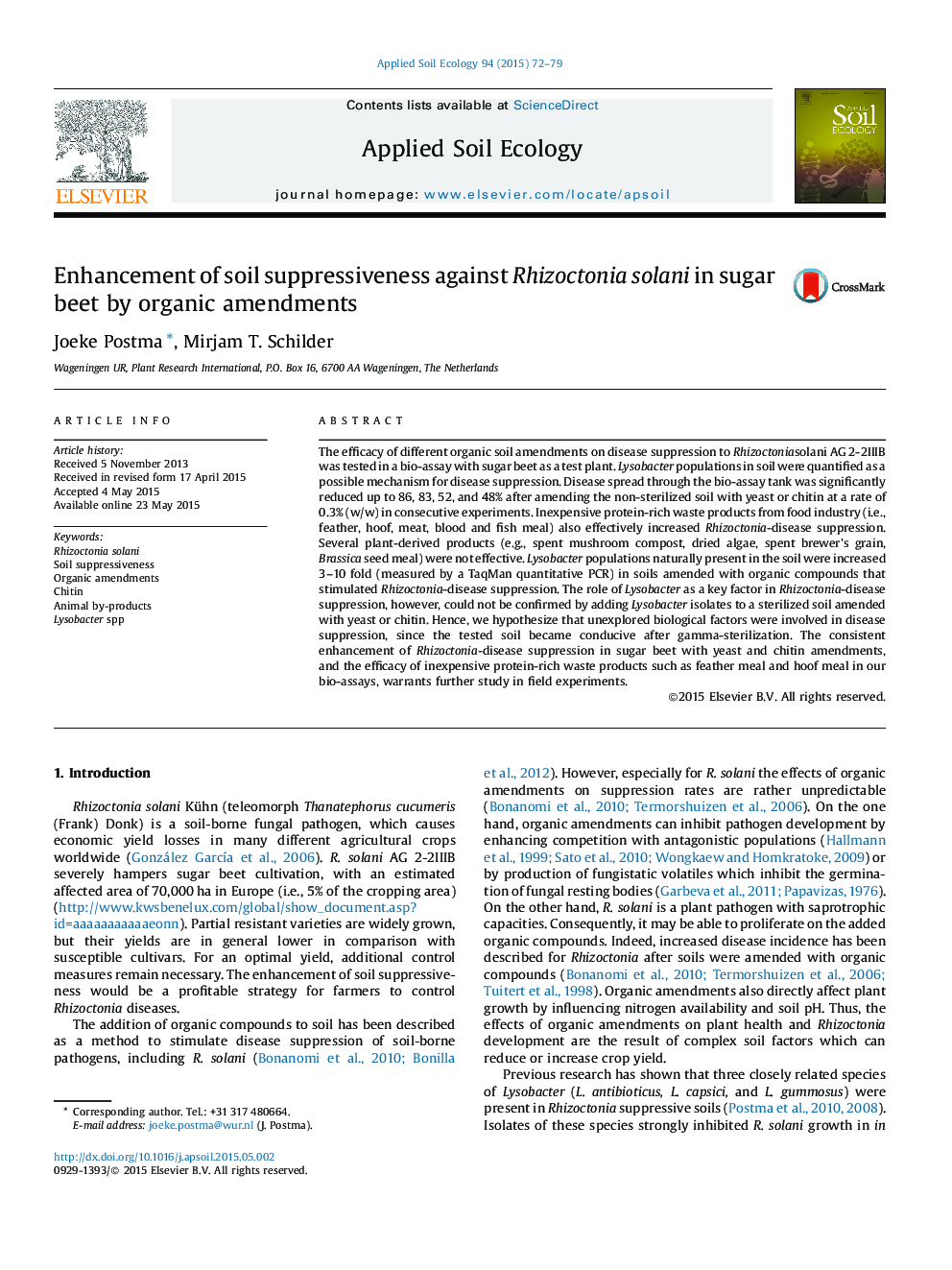| کد مقاله | کد نشریه | سال انتشار | مقاله انگلیسی | نسخه تمام متن |
|---|---|---|---|---|
| 4381961 | 1617789 | 2015 | 8 صفحه PDF | دانلود رایگان |

• Disease suppression to Rhizoctonia solani was evaluated in a sugar beet bio-assay.
• Disease spread was reduced consistently up to 50–85% by organic amendments.
• Chitin, yeast, and several animal by-products increased disease suppression.
• Lysobacter populations in soil were elevated by these organic amendments.
• The mode of action of the soil suppressiveness could not be elucidated.
The efficacy of different organic soil amendments on disease suppression to Rhizoctoniasolani AG 2-2IIIB was tested in a bio-assay with sugar beet as a test plant. Lysobacter populations in soil were quantified as a possible mechanism for disease suppression. Disease spread through the bio-assay tank was significantly reduced up to 86, 83, 52, and 48% after amending the non-sterilized soil with yeast or chitin at a rate of 0.3% (w/w) in consecutive experiments. Inexpensive protein-rich waste products from food industry (i.e., feather, hoof, meat, blood and fish meal) also effectively increased Rhizoctonia-disease suppression. Several plant-derived products (e.g., spent mushroom compost, dried algae, spent brewer’s grain, Brassica seed meal) were not effective. Lysobacter populations naturally present in the soil were increased 3–10 fold (measured by a TaqMan quantitative PCR) in soils amended with organic compounds that stimulated Rhizoctonia-disease suppression. The role of Lysobacter as a key factor in Rhizoctonia-disease suppression, however, could not be confirmed by adding Lysobacter isolates to a sterilized soil amended with yeast or chitin. Hence, we hypothesize that unexplored biological factors were involved in disease suppression, since the tested soil became conducive after gamma-sterilization. The consistent enhancement of Rhizoctonia-disease suppression in sugar beet with yeast and chitin amendments, and the efficacy of inexpensive protein-rich waste products such as feather meal and hoof meal in our bio-assays, warrants further study in field experiments.
Journal: Applied Soil Ecology - Volume 94, October 2015, Pages 72–79